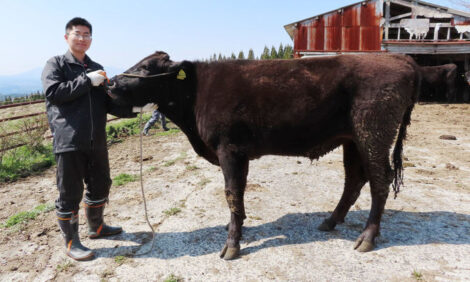



Mexico and Chile Consolidate Position on Beef Inspections
ANALYSIS - By signing a memorandum of understanding over meat-inspection procedures Mexico and Chile could be looking at the prospects of more Mexican beef trading, according to Carlos Navarro, University of New Mexico.
On May 21, the governments of Chile and Mexico harmonized their meat-inspection procedures, a move that could eventually lead to an increase in exports of Mexican meat to the South American country, writes Mr Navarro for the Latin American Database.
The measure, while insignificant on its own, was an important symbolic step in consolidating commitments by Chile and Mexico before the Seventh Pacific Alliance (Alianza del Pacífico) Summit in Cali, Colombia, on May 23 (NotiCen, May 30, 2013).
At the summit, the two presidents, Enrique Peña Nieto of Mexico and Sebastián Piñera of Chile, met with counterparts Juan Manuel Santos of Colombia and Ollanta Humala of Peru.
The meat-inspection agreement signed by Chilean Agriculture Minister Luis Mayol Bouchon and Mexican Agriculture Secretary Enrique Martínez y Martínez represents the commitment of the two countries to remove nontariff trade barriers for agricultural products.
Martínez y Martínez said that the agreement—signed by Mexico’s Servicio Nacional de Sanidad, Inocuidad y Calidad Agroalimentaria (SENASICA) and Chile’s Servicio Agrícola y Ganadero (SAG)—would establish quality-control parity between the two nations, clearly defining classification of different cuts and meat products.
The two sides also agreed to develop mechanisms for SENASICA and SAG to exchange technical information, research, and training methods used in the inspection process at points of entry in each of the two countries.
The agreement is expected to help open up the Chilean market to Mexican beef, with Mexican meat exports to the South American country virtually nonexistent in recent years. The Chilean market could prove lucrative for the Mexican beef industry, which generally exports its higher-quality and
higher-value cuts while selling other parts in Mexico for domestic consumption.
Chile currently imports the largest amounts of meat from three South American neighbors—Brazil, Argentina, and Uruguay—all of which have large cattle industries. Chile’s meat imports also originate in the US and Canada.
While Mexico’s beef exports to Chile would probably not be much of a threat to Brazilian, Argentine, or Uruguayan sales, establishing a foothold in the Chilean market would be important for the Mexican meat industry. Mexican agriculture exports to Chile comprise a very small portion of total exports to the South American country.
At present, 97 per cent of Mexican exports to Chile are manufactured products, including televisions, tractors, and motor vehicles, according to data from ProMéxico, the export-promotion arm of the Secretaría de Economía (SE).
| TheCattleSite News Desk | Read more Latin America Data Base News here |


